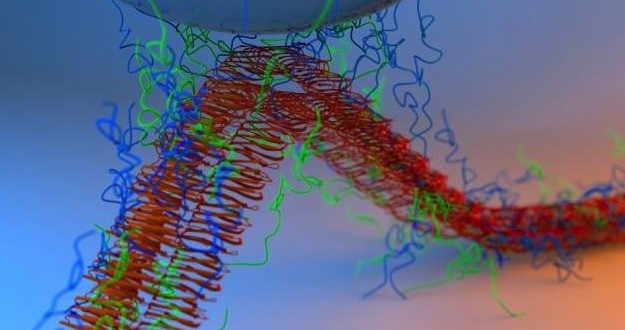Inspired by natural adhesives secreted by shellfish, MIT engineers have created a new stronger waterproof glue that can be used to repair ships and even heal wounds and surgical incisions.
Scientists at the Massachusetts Institute of Technology (MIT) engineered bacteria to produce a hybrid material that incorporates naturally sticky mussel proteins as well as a bacterial protein found in biofilms – slimy layers formed by bacteria growing on a surface.
“The ultimate goal for us is to set up a platform where we can start building materials that combine multiple different functional domains together and to see if that gives us better materials performance,” says Timothy Lu, an associate professor of biological engineering and electrical engineering and computer science (EECS) and the senior author of the research paper.
The sticky substance that helps mussels attach to underwater surfaces is made of several proteins known as mussel foot proteins. Scientists have previously engineered E. coli bacteria to produce individual mussel foot proteins, but these materials do not capture the complexity of the natural adhesives, Lu says. In the new study, the MIT team wanted to engineer bacteria to produce two different foot proteins, combined with bacterial proteins called curli fibers — fibrous proteins that can clump together and assemble themselves into much larger and more complex meshes.
Lu’s team engineered bacteria so they would produce proteins consisting of curli fibers bonded to either mussel foot protein 3 or mussel foot protein 5. After purifying these proteins from the bacteria, the researchers let them incubate and form dense, fibrous meshes. The resulting material has a regular yet flexible structure that binds strongly to both dry and wet surfaces.
The adhesives were also stronger than naturally occurring mussel adhesives, and they are the strongest biologically inspired, protein-based underwater adhesives reported to date, the researchers say.
Using current techniques, the researchers can produce only small amounts of the adhesive, so they are now trying to improve the process and generate larger quantities. They also plan to experiment with adding some of the other mussel foot proteins. “We’re trying to figure out if by adding other mussel foot proteins, we can increase the adhesive strength even more and improve the material’s robustness,” Lu says.
The team also plans to try to create “living glues” consisting of films of bacteria that could sense damage to a surface and then repair it by secreting an adhesive.
The research was funded by the Office of Naval Research, the National Science Foundation, and the National Institutes of Health. The paper’s lead author is Chao Zhong, a former MIT postdoc who is now at ShanghaiTech University. Other authors are graduate student Thomas Gurry, graduate student Allen Cheng, senior Jordan Downey, postdoc Zhengtao Deng, and Collin Stultz, a professor in EECS.
Agencies/Canadajournal
 Canada Journal – News of the World Articles and videos to bring you the biggest Canadian news stories from across the country every day
Canada Journal – News of the World Articles and videos to bring you the biggest Canadian news stories from across the country every day



